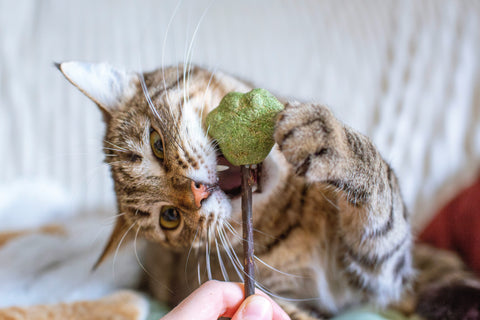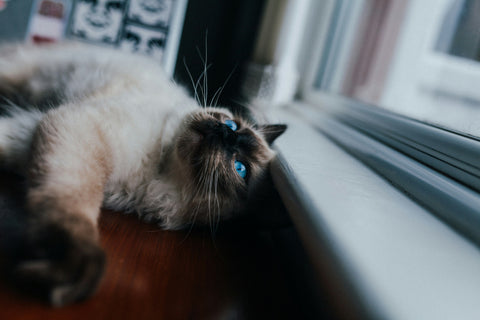Why Cats Love Catnip: Secrets Behind the Feline Fascination
Have you ever sprinkled catnip and watched your usually composed feline transform into an energetic whirlwind? Catnip, often dubbed nature’s ultimate treat for cats, has captivated felines of all breeds and ages for generations. But what is it about this herb that provokes such a reaction? This article dives into the fascinating world of catnip, exploring the science behind its effects, why some cats are immune, and how to use it responsibly to enhance your cat’s life.
What Is Catnip?
Catnip, or Nepeta cataria, belongs to the mint family and is native to Europe and Asia. Its allure lies in a chemical compound called nepetalactone, which is found in the plant’s leaves, stems, and seeds. When a cat sniffs catnip, the nepetalactone binds to receptors in their nasal tissues, triggering sensory neurons that send signals to the brain. This cascade activates the amygdala and hypothalamus, regions associated with emotions and instincts, resulting in a euphoric or calming effect.
For many cats, this reaction manifests as rolling, rubbing, purring, or playful bursts of energy. The effects typically last for 10 to 15 minutes, after which cats become temporarily immune to its influence for a few hours. However, this brief period of euphoria is enough to turn any sleepy cat into an energetic ball of excitement.
Why Do Cats Love Catnip?
Scientists believe the connection between cats and catnip may be evolutionary. Nepetalactone acts as a natural insect repellent, potentially protecting wild cats from pests and diseases. It’s theorized that wild cats who responded to the herb’s effects were less likely to suffer from insects, which could transmit illnesses or cause irritation. As a result, these cats may have had a survival advantage, which was passed down through generations.
Behavioural reactions to catnip like rolling, meowing, rubbing, or even mimicking mating rituals suggest an instinctual engagement with the herb. Some scientists even argue that catnip’s effects may mimic the behaviour of a cat in heat, causing cats to exhibit similar actions, such as scent-marking and playful aggression.
However, not all cats are affected by catnip. Research shows that 30 - 40% of cats lack the genetic sensitivity to nepetalactone, which means they won’t experience its effects. This sensitivity is inherited, so if a cat’s parents didn’t react to catnip, chances are, their kittens won’t either. Additionally, kittens under three months and senior cats often show little to no reaction due to underdeveloped or diminished sensory systems.
Random Catnip Trivia
Not All Cats Respond
Sensitivity to catnip is hereditary. Cats without the necessary gene won’t experience its effects, while those with the gene will have an intense reaction to the plant.
Big Cats Enjoy It Too
Lions, tigers, and leopards exhibit similar reactions to catnip as domestic cats. While wild cats may not always encounter catnip in their natural habitats, they can be exposed to it in zoological settings, where they often roll around in it just like house cats.
Alternatives Exist
Cats who aren’t interested in catnip may respond to silver vine, valerian root, or honeysuckle. These herbs contain similar active compounds that appeal to felines in much the same way that catnip does.
Benefits of Catnip for Your Cat
When used responsibly, catnip offers several benefits that can enrich your cat’s life:
Mental Stimulation
Catnip provides an engaging outlet for indoor cats, especially those who may struggle with boredom or lack of stimulation. This playful activity mimics the hunting instincts of cats, encouraging them to interact with toys, scratch posts, or other objects. By engaging their natural instincts, you can help prevent behavioural problems that arise from a lack of stimulation.
Stress Relief
For anxious or shy cats, catnip can have a calming effect, particularly during stressful situations such as vet visits or when adjusting to a new environment. The calming effects of catnip can soothe a nervous cat, making them more comfortable during stressful experiences.
Encouraging Exercise
Catnip-infused toys promote physical activity, which is essential for maintaining a healthy weight, muscle tone, and overall fitness. Cats may engage in more vigorous play, such as chasing, pouncing, and rolling, all of which contribute to their physical health.
Does Catnip Have Risks?
Catnip is generally safe for cats, but moderation is key. Overindulgence can lead to mild side effects such as vomiting or diarrhoea, especially if cats consume too much of the plant. However, these side effects are typically short-lived and don’t cause long-term harm. The key to using catnip responsibly is offering it in moderation—usually once every two to three days. This allows cats to enjoy its benefits without developing a tolerance or becoming desensitized to its effects.
In rare cases, some cats may become overly excited or aggressive, particularly if they’re exposed to catnip too frequently. While this isn’t common, it’s important to monitor your cat’s behaviour and adjust their exposure as needed.
Healthier Alternatives to Catnip
If your cat doesn’t respond to catnip or you’re seeking variety, there are several alternatives to consider. These alternatives contain similar compounds that appeal to cats and offer different sensory experiences:
-
Silver Vine: Silver vine (Actinidia polygama) is a plant native to China and Japan, and it contains two compounds—actinidine and dihydroactinidiolide—that stimulate cats. Many cats who are unresponsive to catnip find silver vine irresistible, making it a great alternative.
-
Valerian Root: Known for its calming properties in humans, valerian root energizes some cats, stimulating them to play and engage in physical activity. This herb may be particularly useful for cats that are shy or need encouragement to exercise.
-
Honeysuckle Wood: Tatarian honeysuckle emits a scent that appeals to many non-responsive cats. Honeysuckle sticks are a fun and natural way to stimulate your cat’s senses, and they’re often used as an alternative to catnip in toys.
Tips for Choosing and Using Catnip
When selecting catnip for your pet, it’s important to choose high-quality products to ensure your cat’s safety and enjoyment. Here are a few tips:
-
Opt for Organic, Pesticide-Free Products: Pesticides and chemicals can harm your cat, so it’s important to choose organic, pesticide-free catnip that’s safe for consumption.
-
Ensure Freshness: High-quality catnip should have a strong aroma and vibrant colour. If the catnip seems dull or has little scent, it may have lost its potency. Always check the packaging for freshness before purchasing.
-
Introduce Gradually: Not all cats react the same way to catnip, so it’s a good idea to introduce it gradually. Start with small amounts and observe how your cat reacts. If they enjoy it, you can increase the exposure.
-
Use Toys or Scratching Posts Infused with Catnip: Instead of just giving your cat loose catnip, you can use toys or scratching posts infused with catnip to control the amount they ingest. This helps prevent overindulgence and ensures the catnip is consumed in a safe and controlled manner.
Creating a Safe Play Environment
While catnip is generally safe for most cats, it’s important to supervise your pet during catnip playtime. Keep an eye on them to ensure they don’t overindulge, and consider rotating between catnip and its alternatives to maintain novelty and engagement. Be sure to avoid giving catnip to overly aggressive or highly anxious cats, as it may exacerbate their behaviour.
If you have multiple cats, be mindful of any potential territorial behaviour when using catnip. Some cats may become possessive over toys or space, especially if they are under stress or are not accustomed to sharing their environment.




Comments (0)
There are no comments for this article. Be the first one to leave a message!